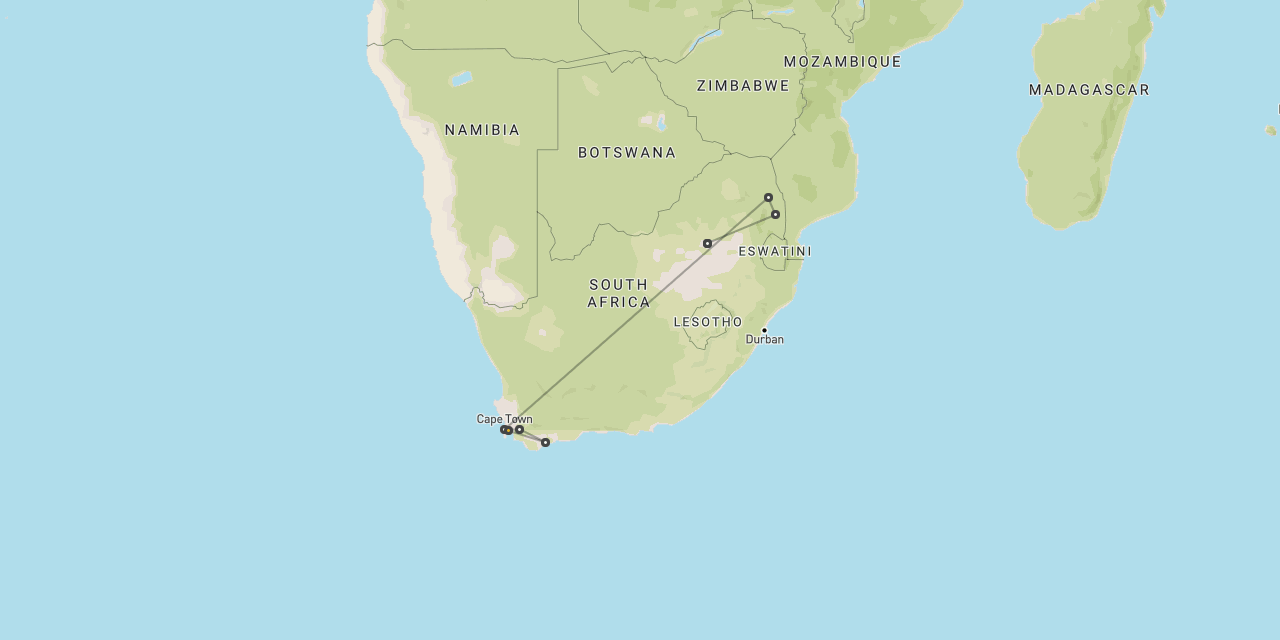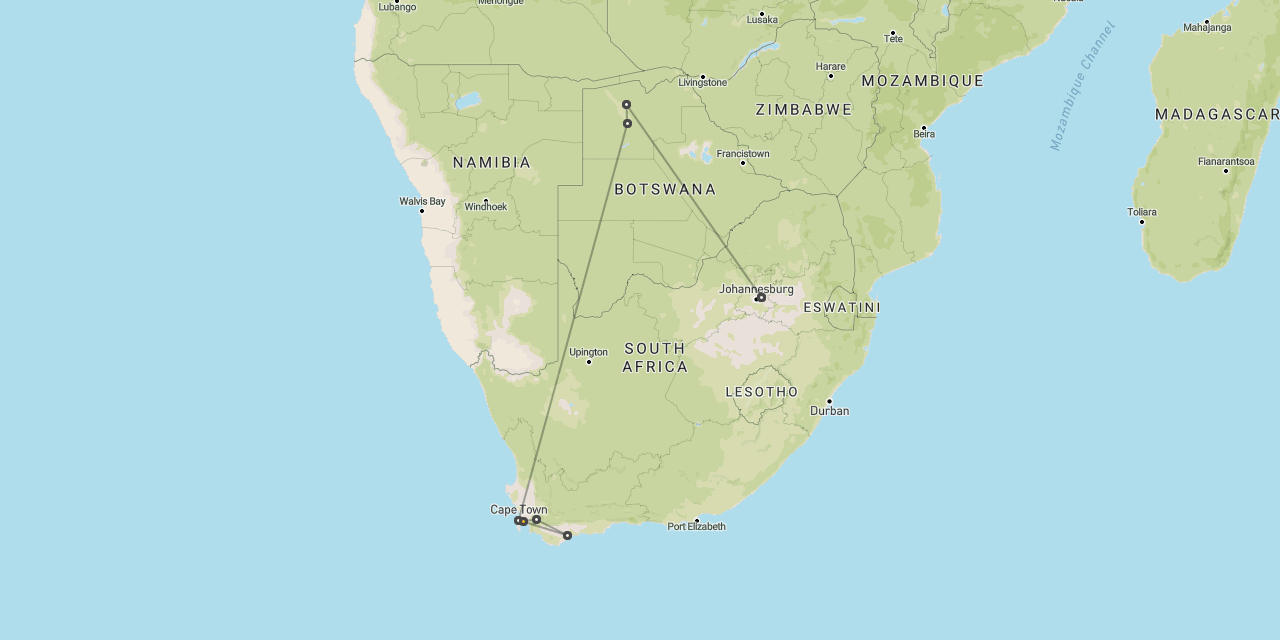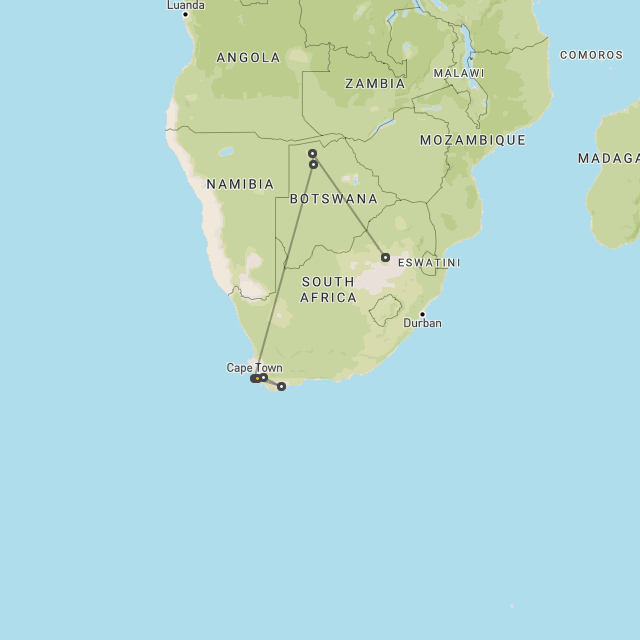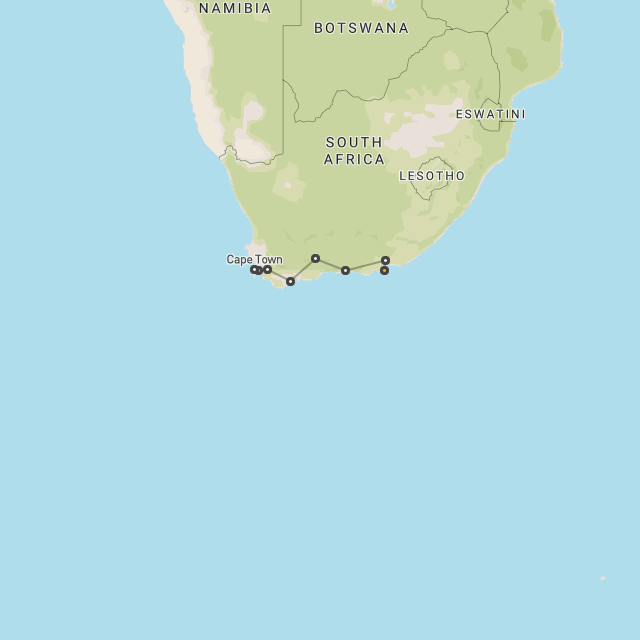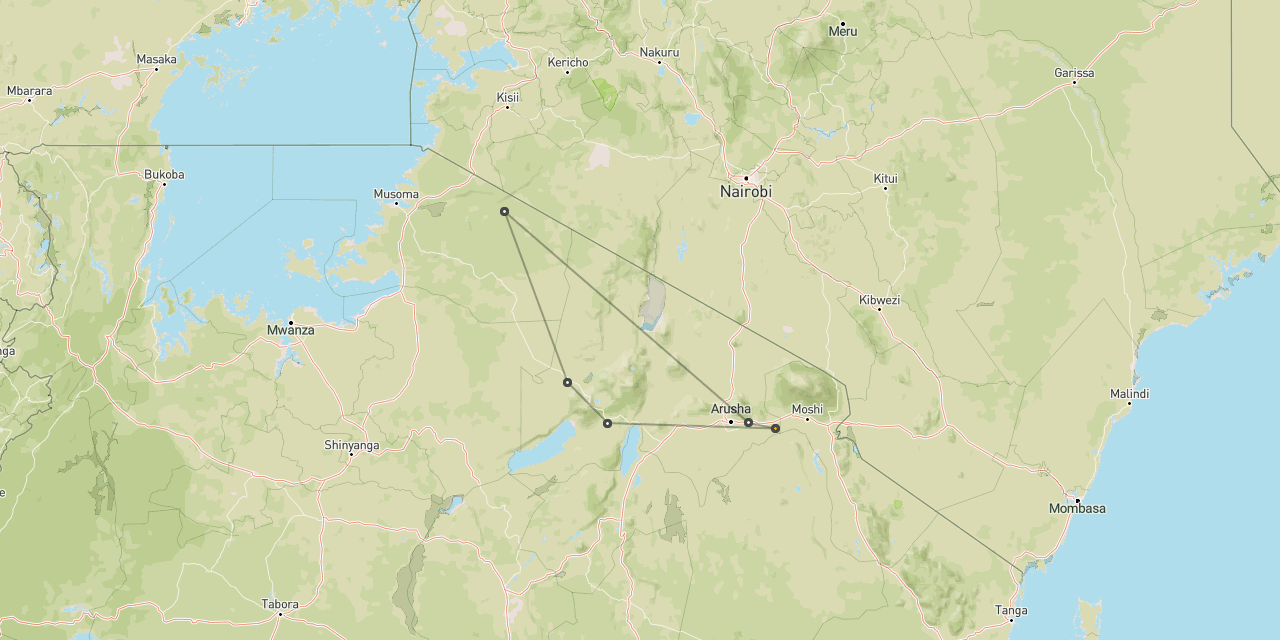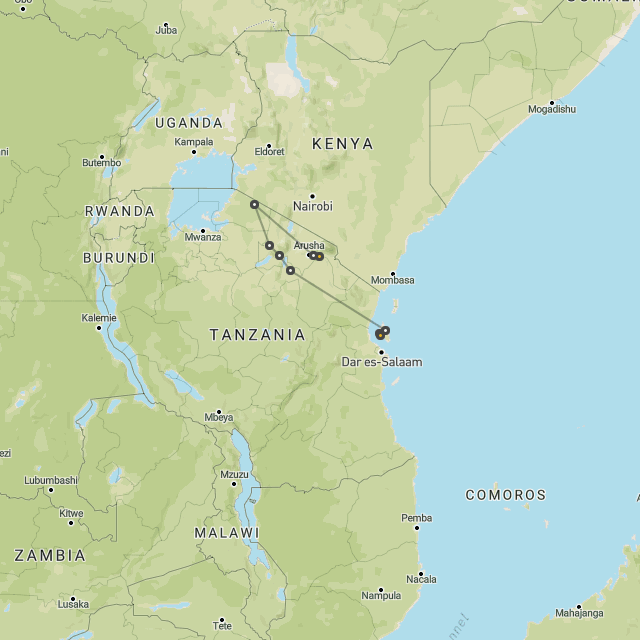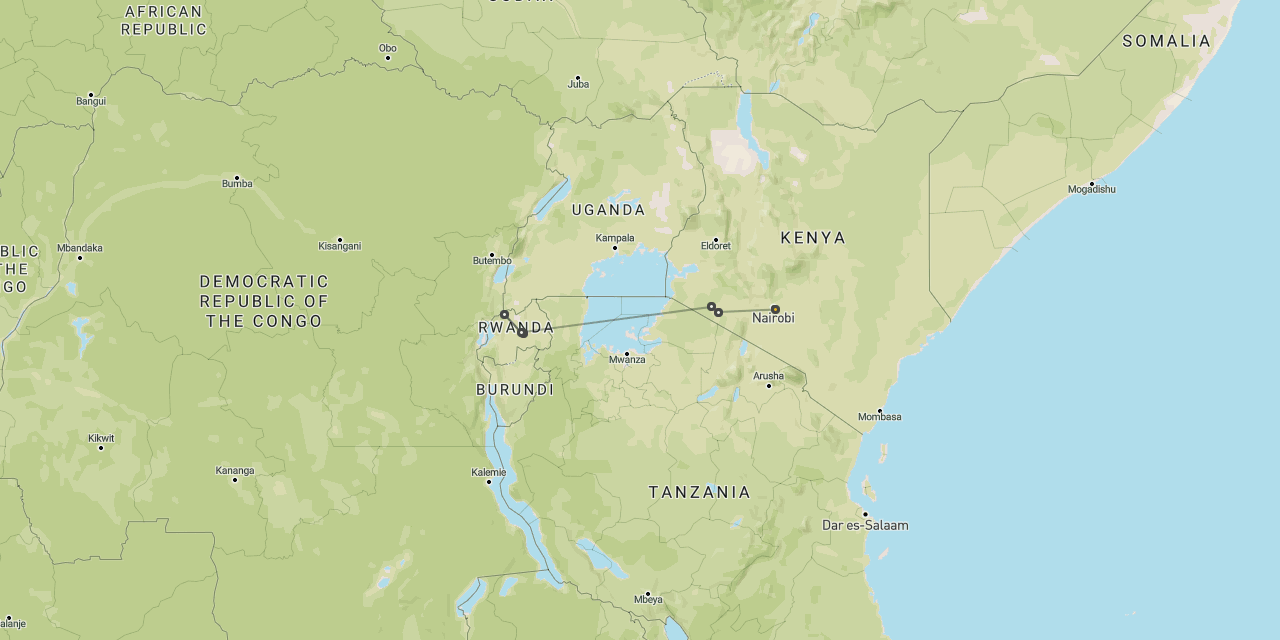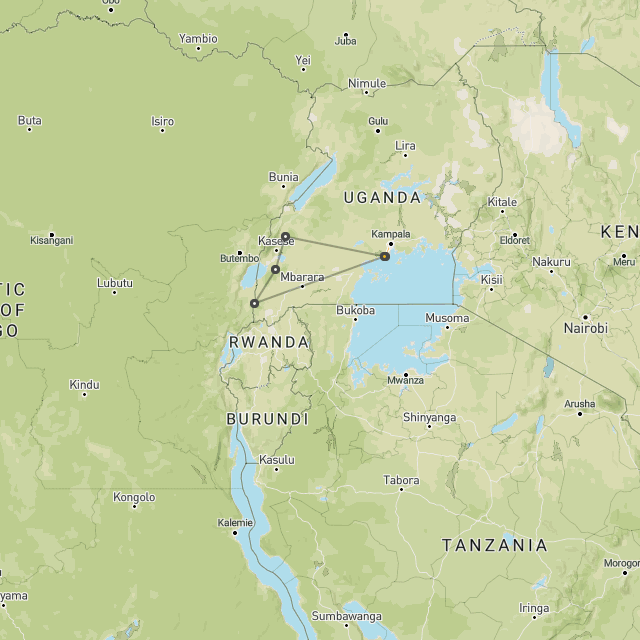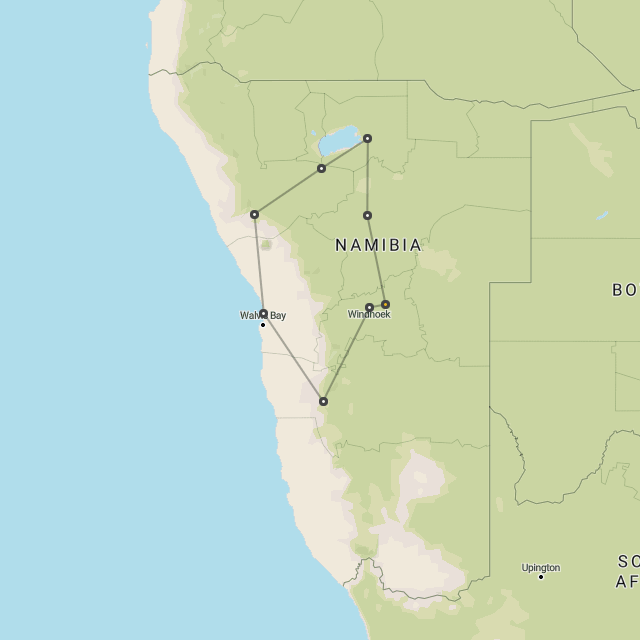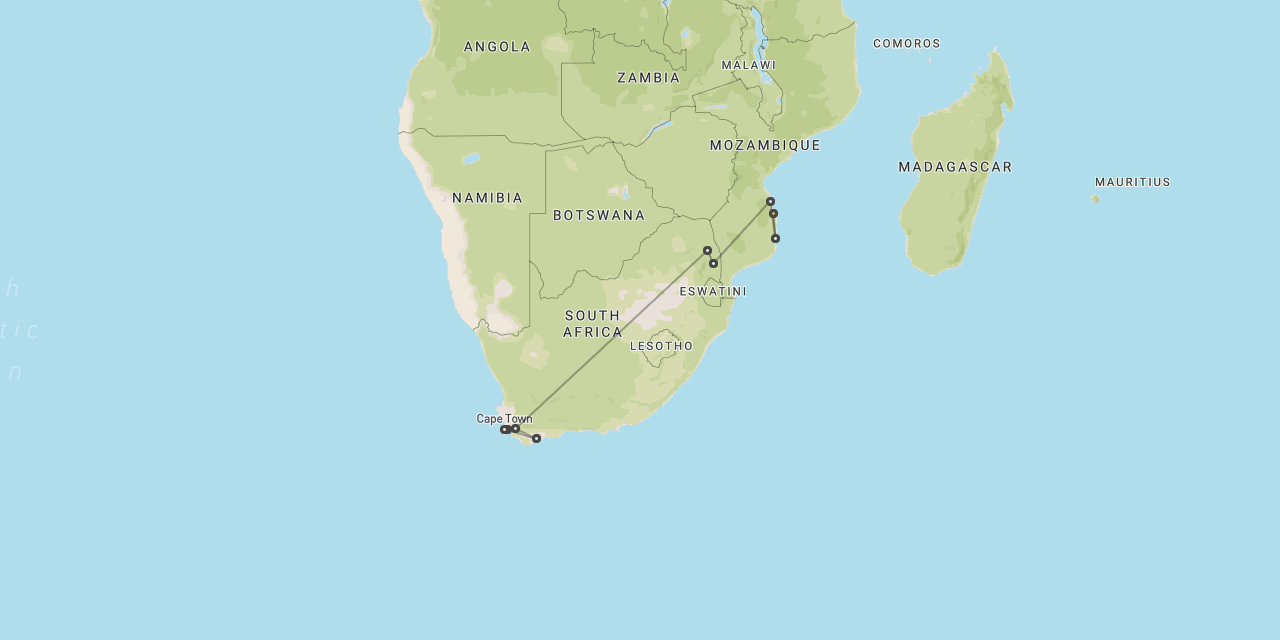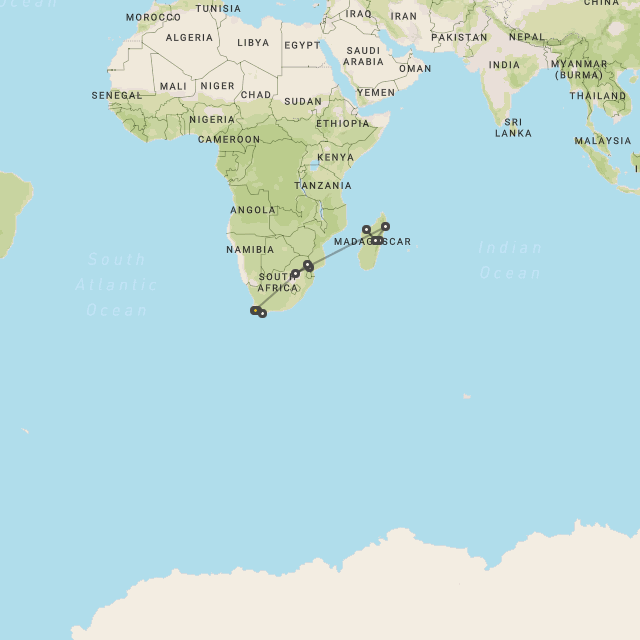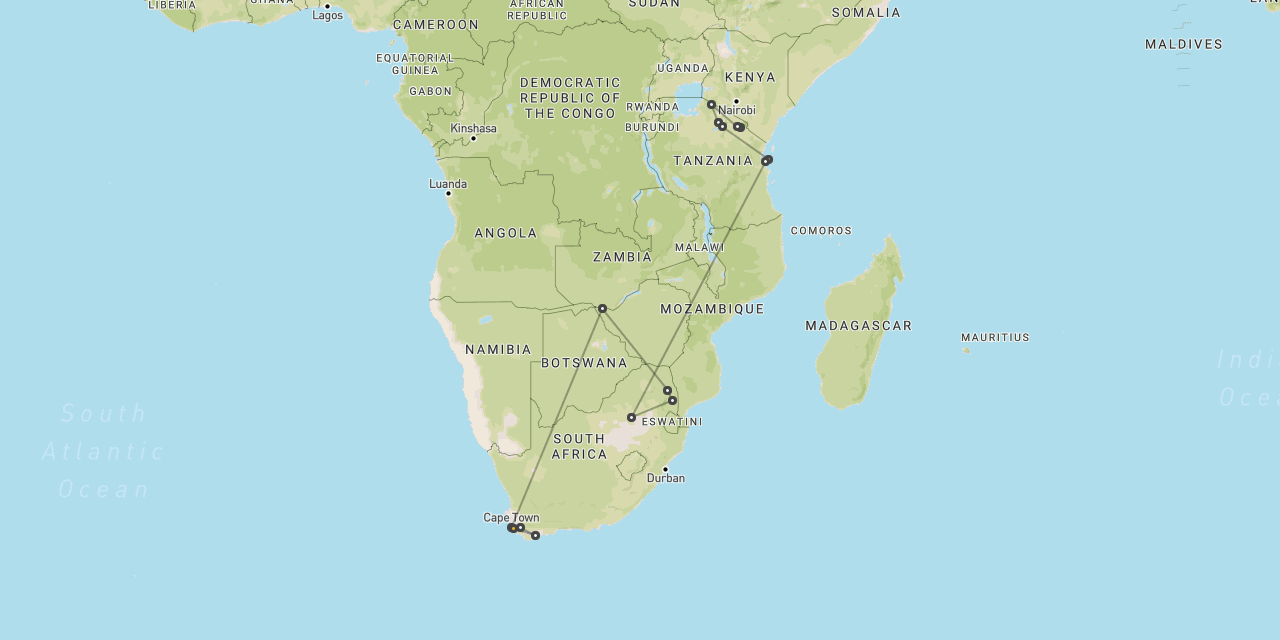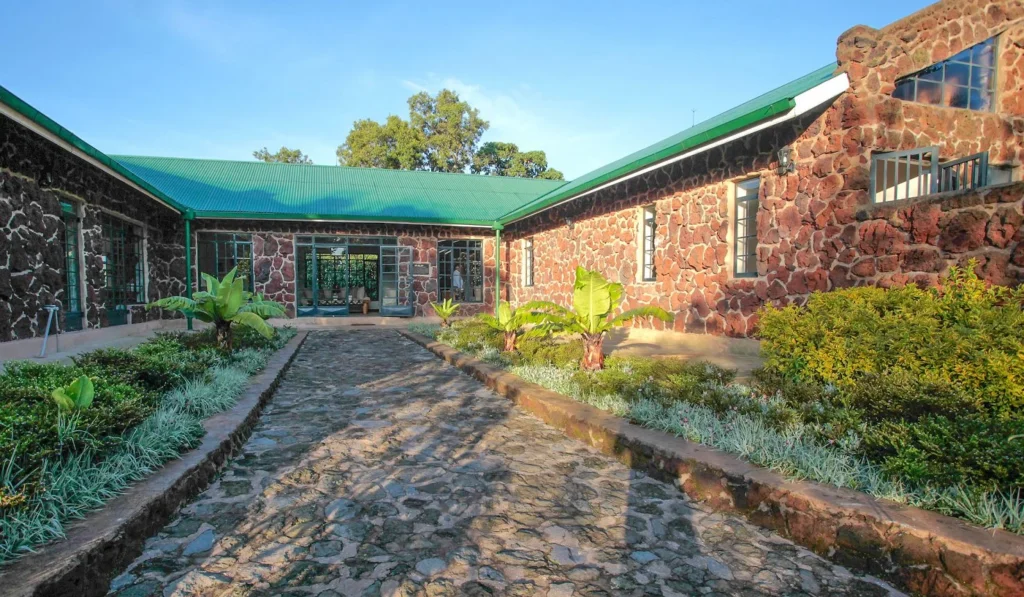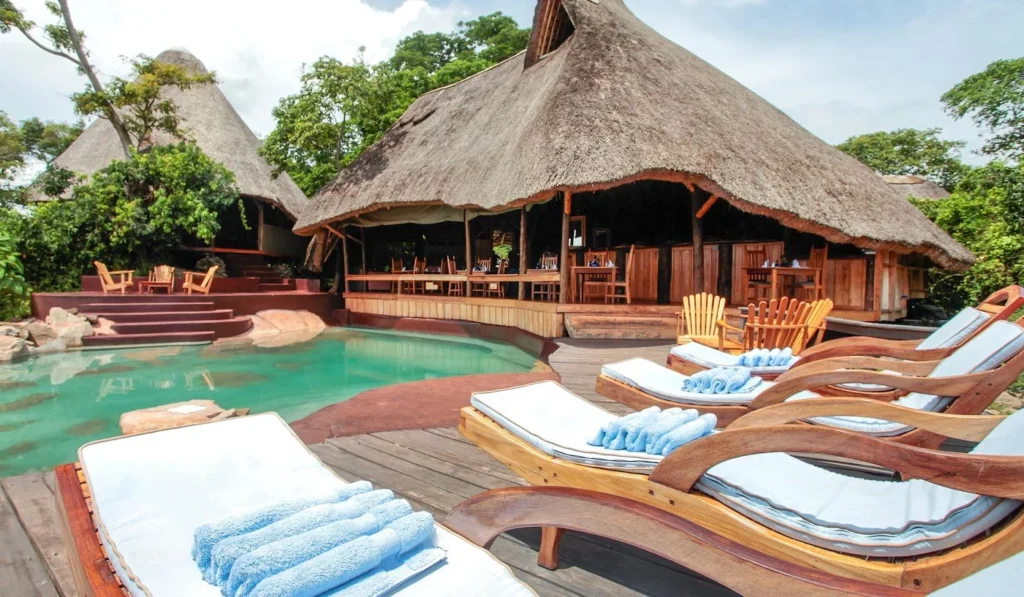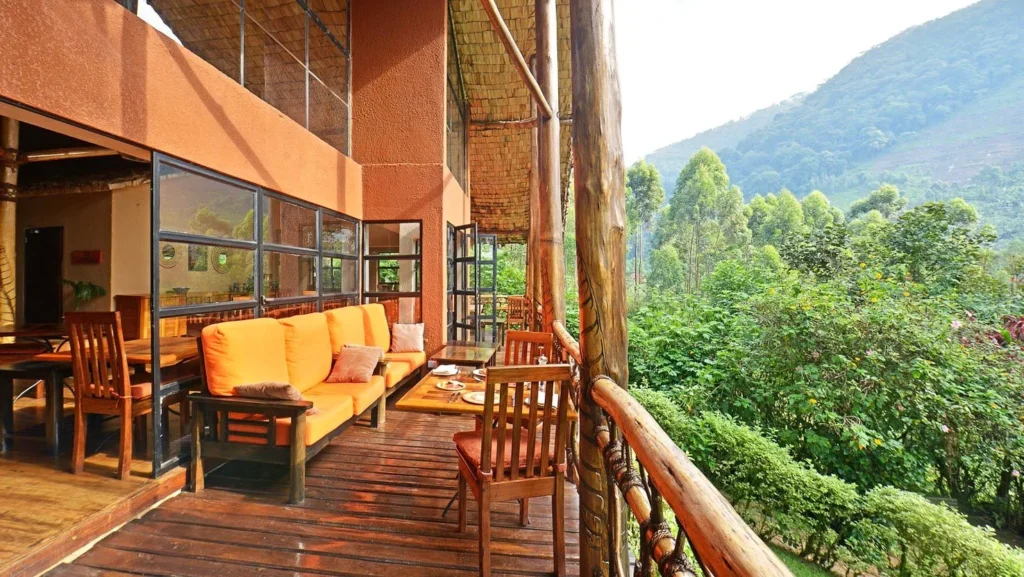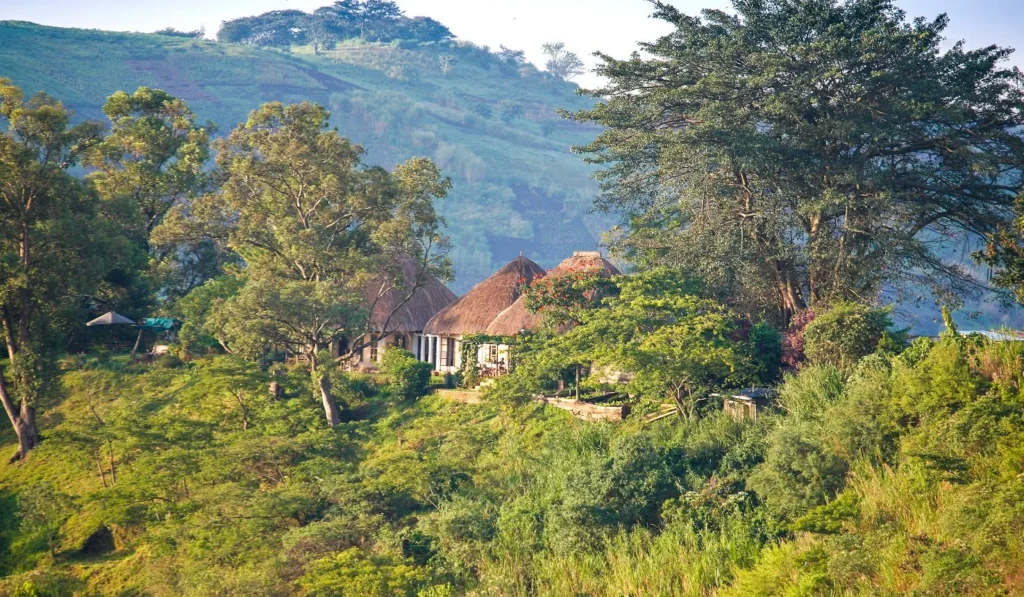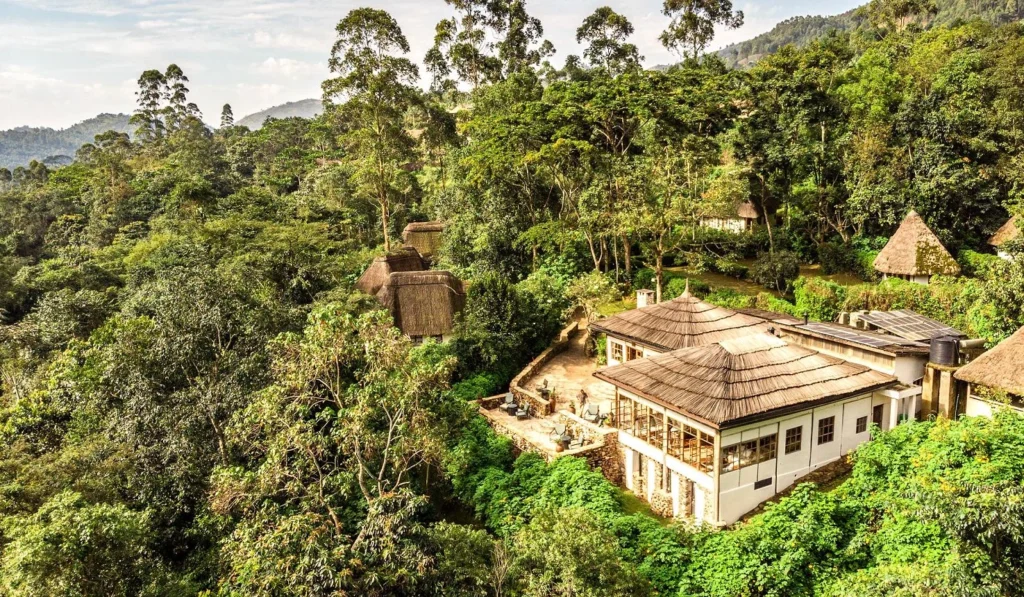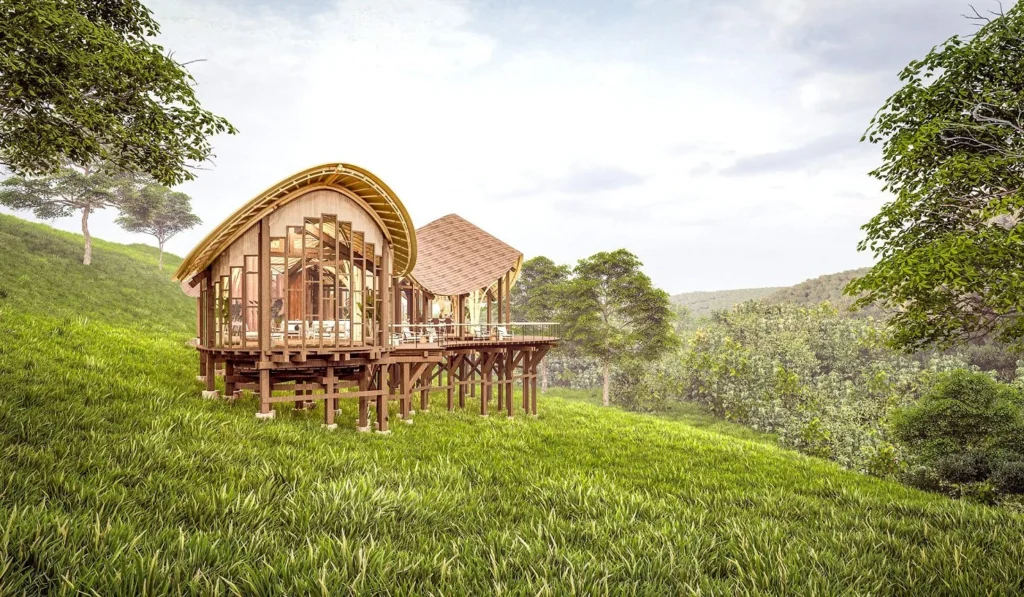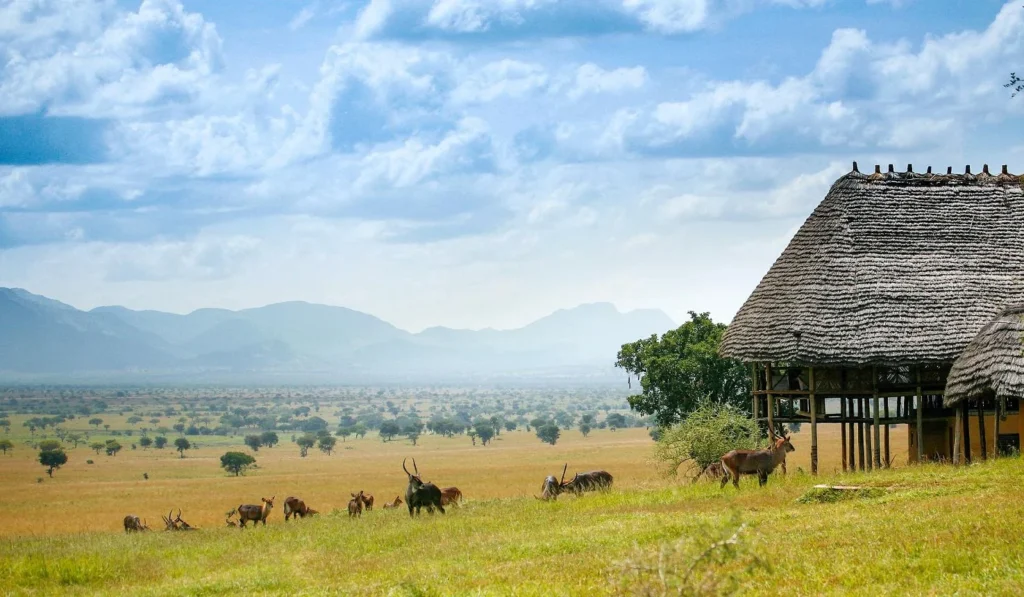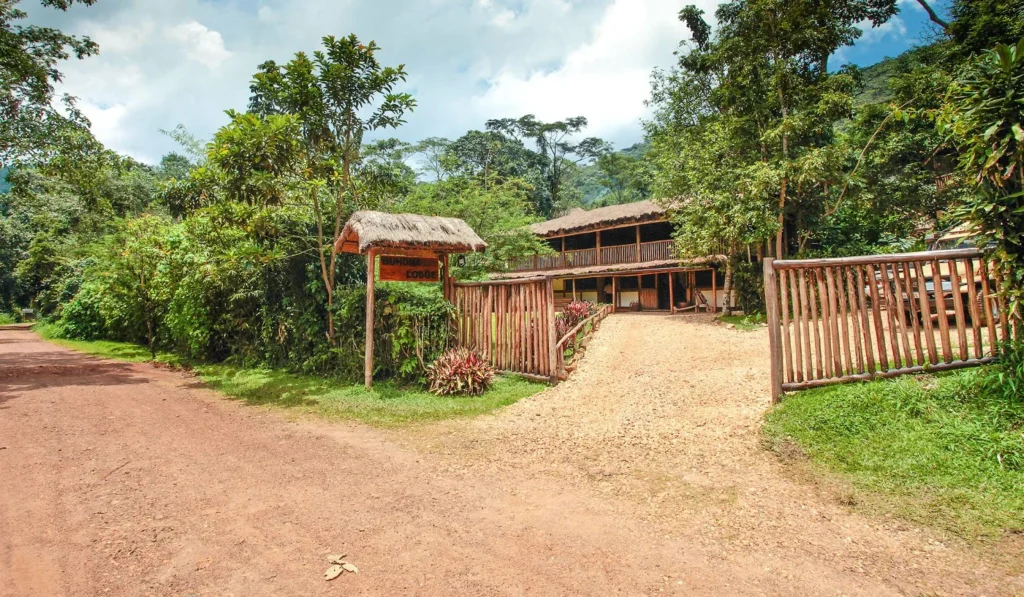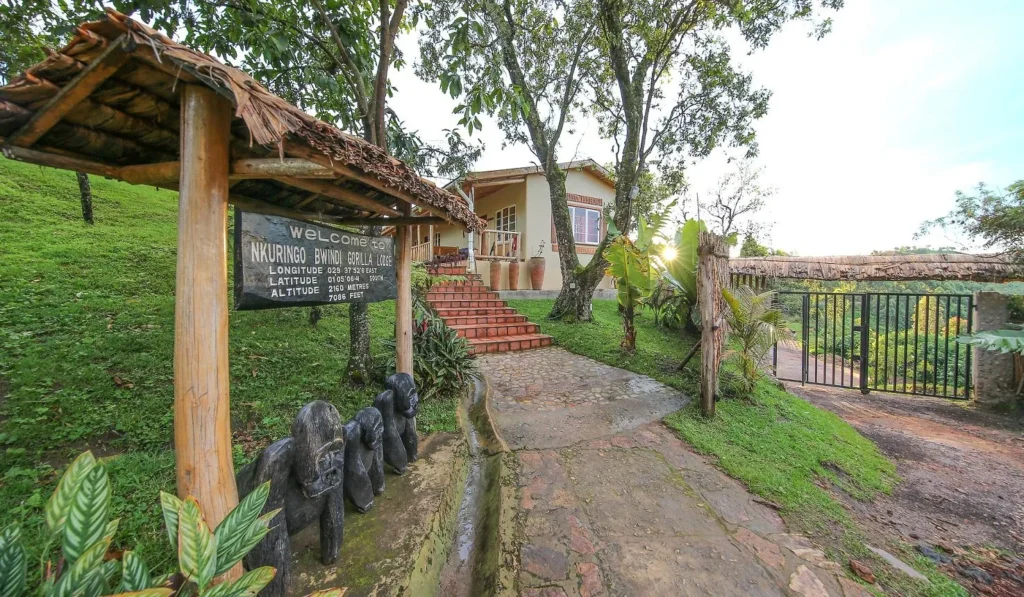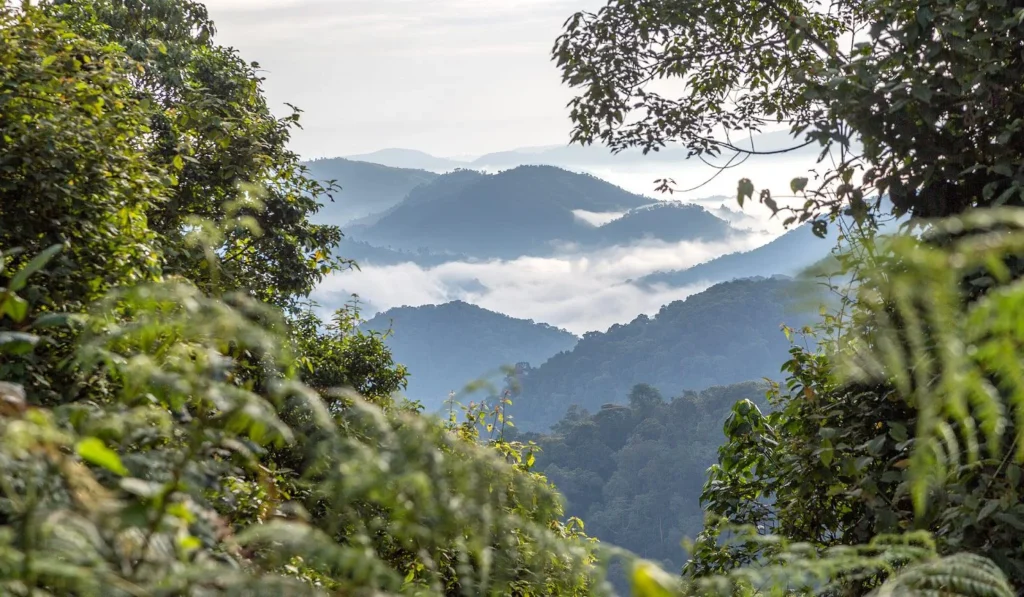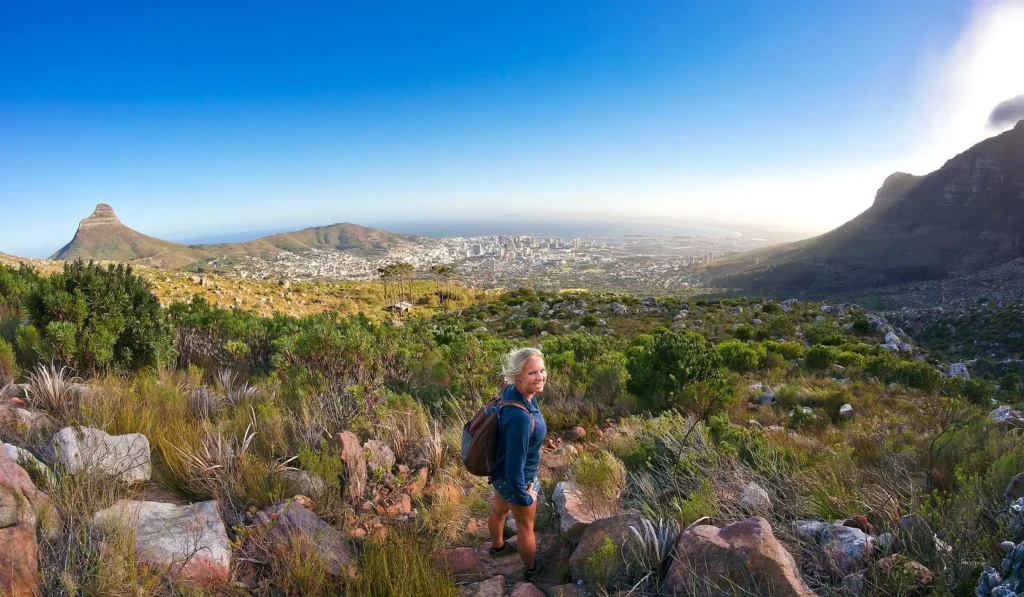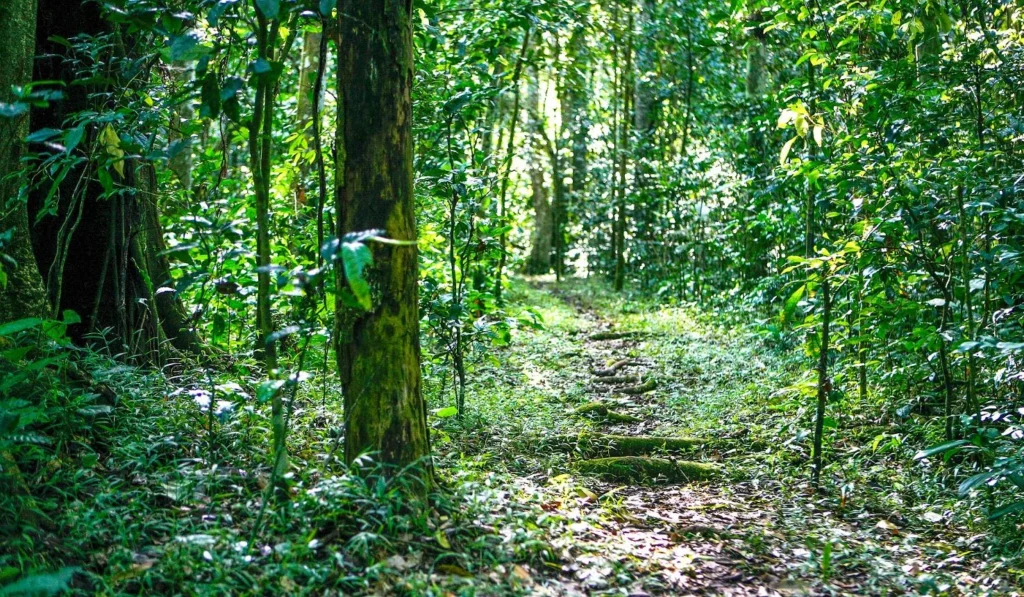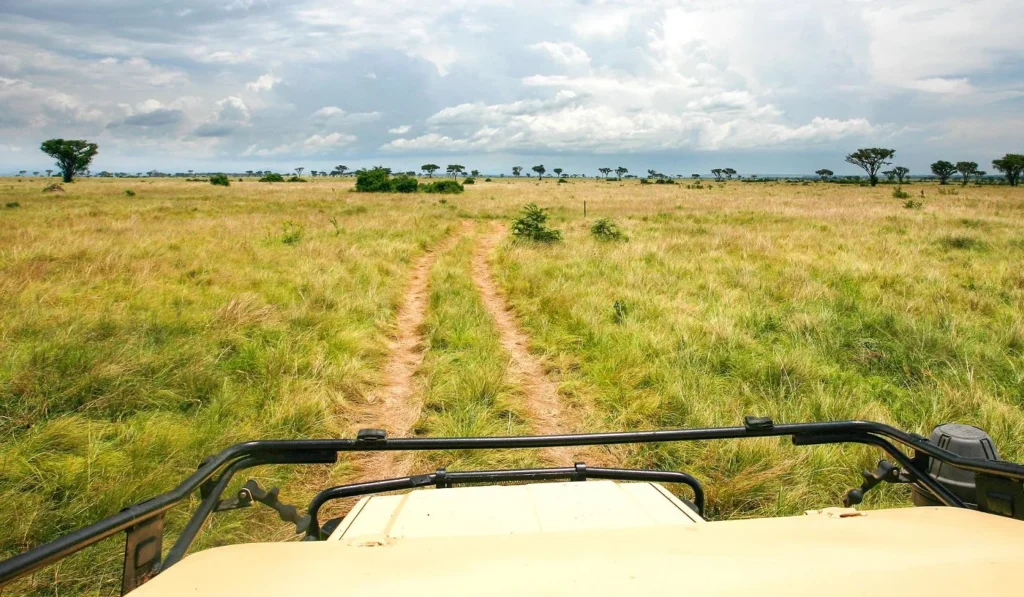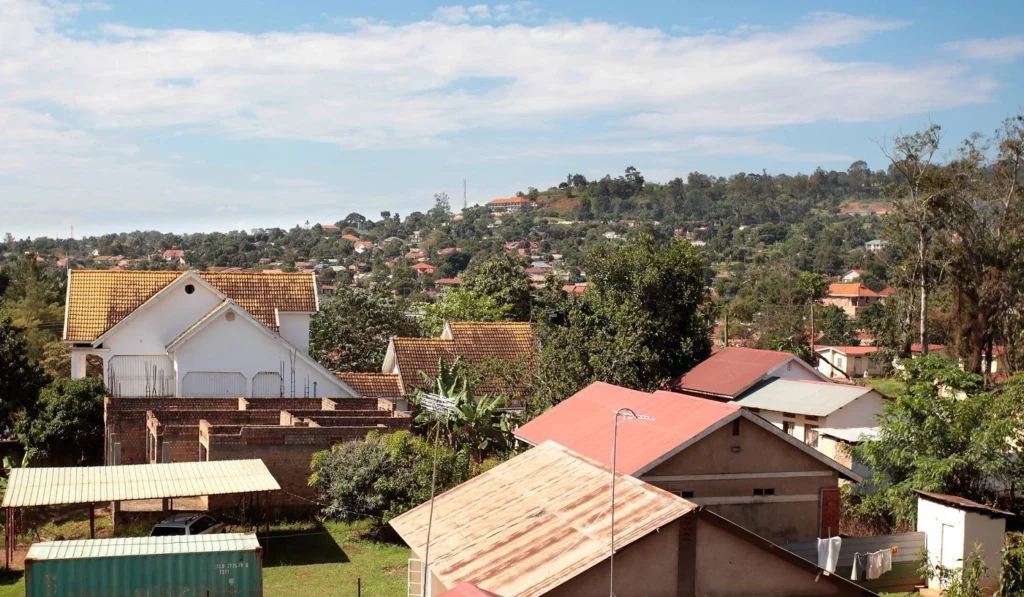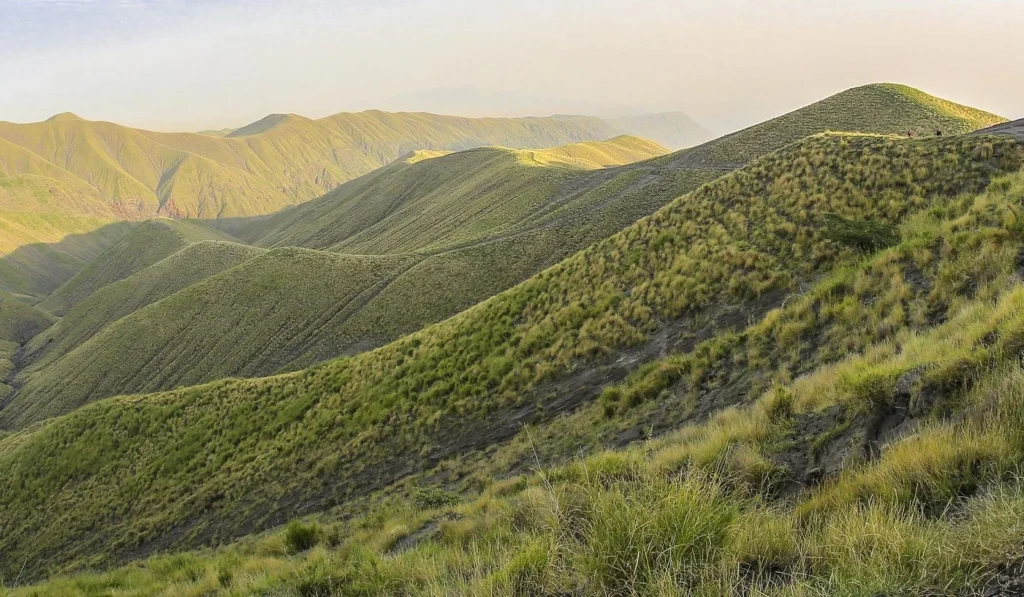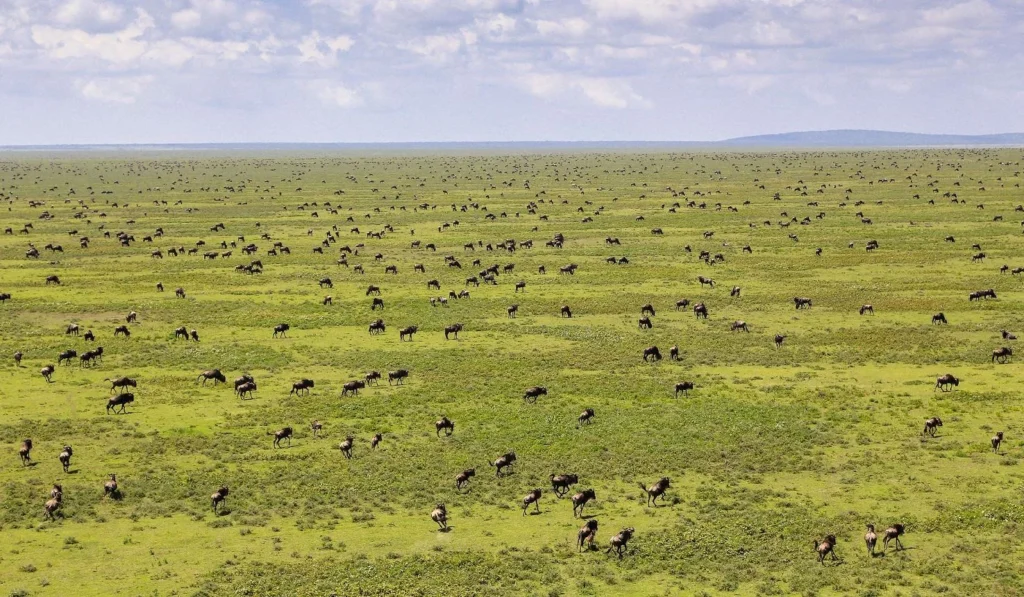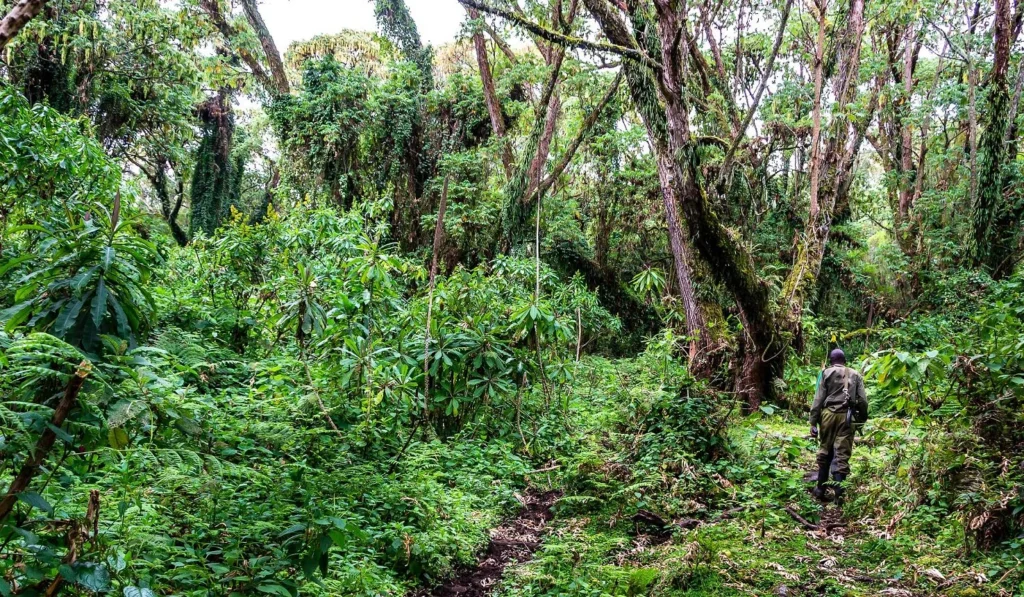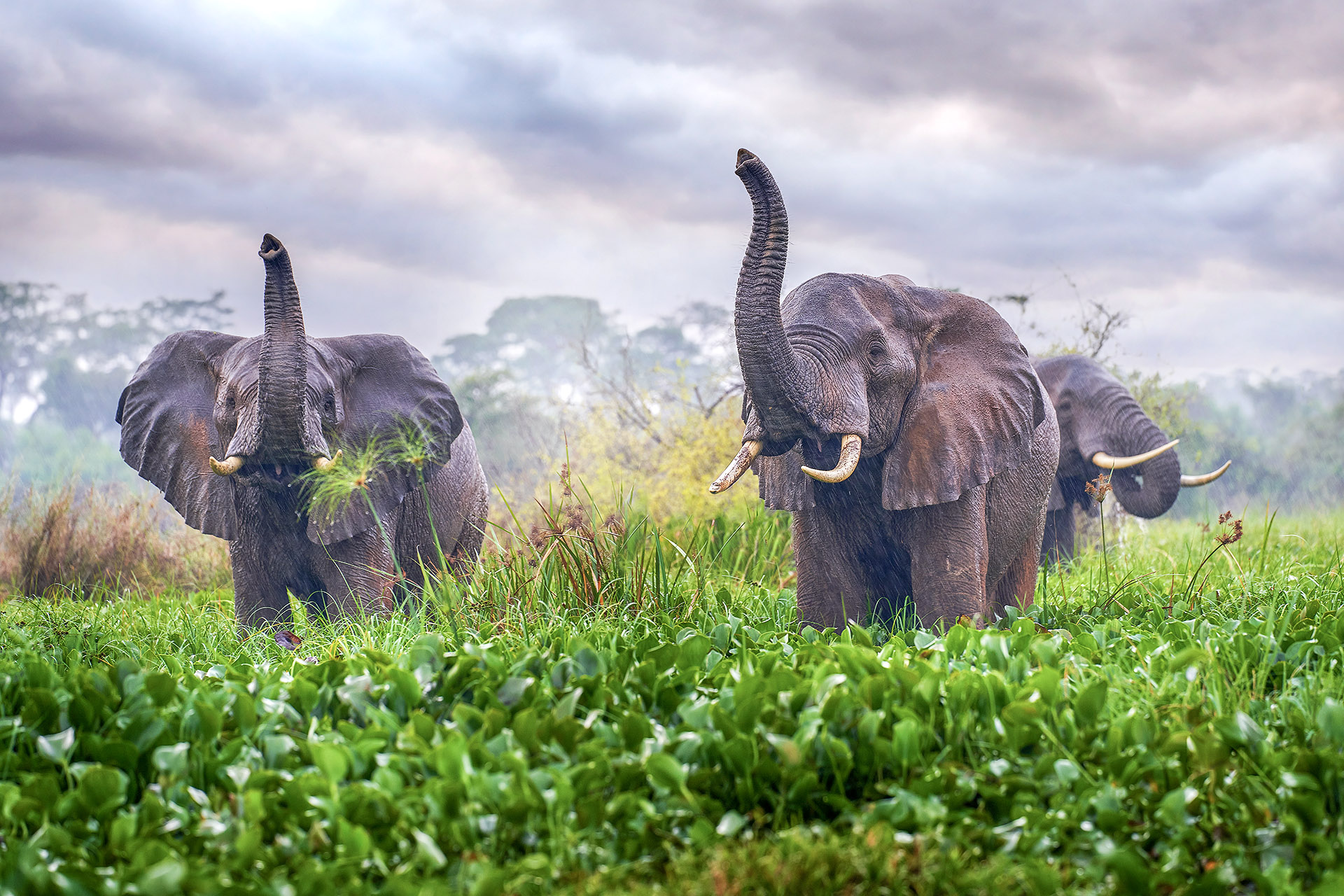
When to go on safari in Uganda
Uganda
is best for gorillas during
Dec-Feb and Jun-Aug
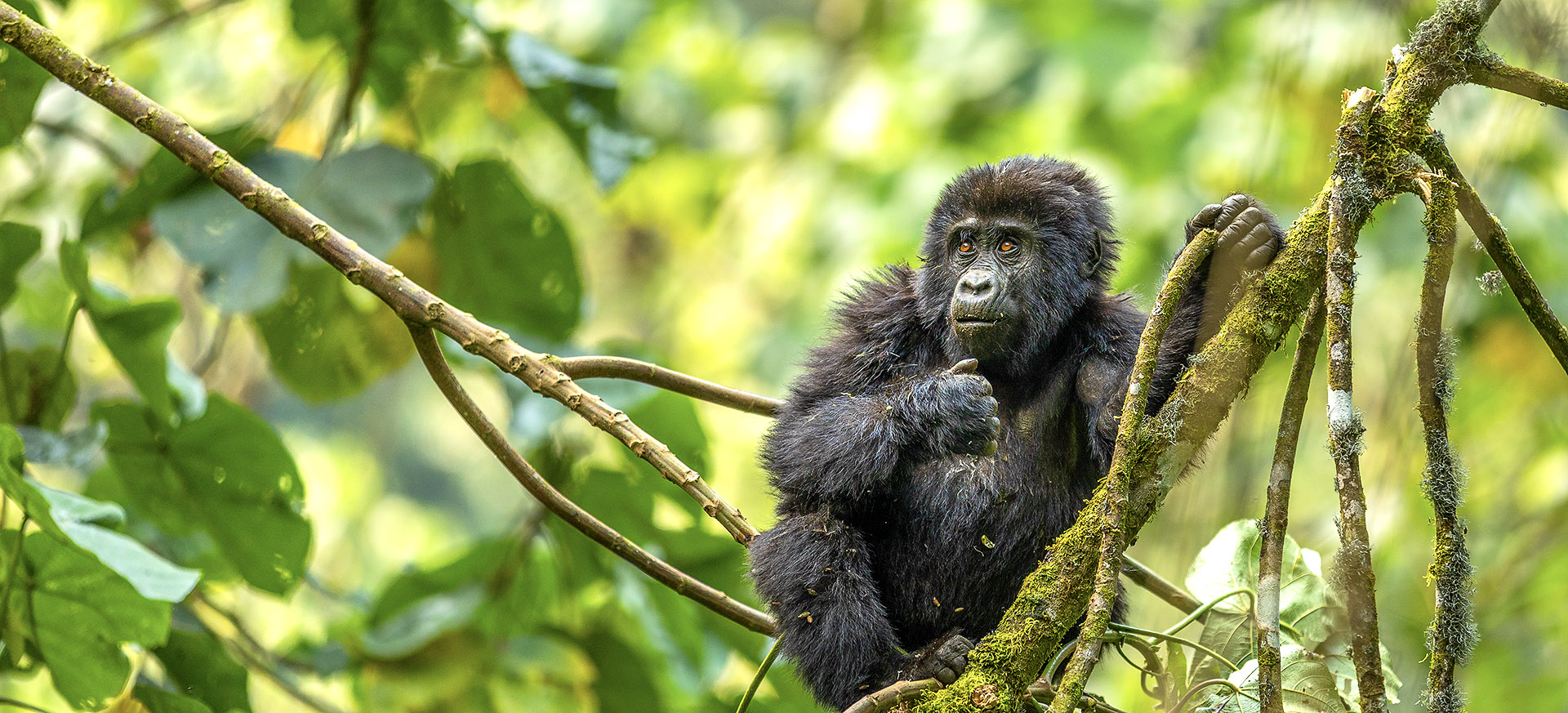
gorilla seasons that coincide with peak vacation periods
The seasonality in Uganda is rather complicated and unusual. The gorilla and chimp areas can be visited year round, but three main savanna safari areas have very different seasons.
The one stand-out time of year when good conditions coincide in almost all the various locations is Dec-Feb.
The Mar-Apr season is a period when the Bwindi Forest (gorillas) and Kibale Forest (chimps) areas usually experience slightly higher than usual rainfall, although showers tend to be lighter and more fleeting than those later in the year. The difference is probably not enough to significantly affect trip planning.
In the savanna safari areas at this time Queen Elizabeth has similar conditions to the above, but Murchison Falls and Kidepo Valley can be very hot and humid, with increasing rainfall.
The May-Sep dry season is a period when the Bwindi Forest (gorillas) and Kibale Forest (chimps) areas usually experience slightly less rainfall than usual, making for easier and more pleasant gorilla tracking conditions.
In the savanna safari areas at this time Queen Elizabeth has similar conditions to the above. Murchison Falls can be pretty dry during Jun-Jul, but can be very rainy Aug-Sep, with increasingly difficult wildlife viewing. In Kidepo Valley this is the main rainy season and worst time of year to visit.
The Oct-Nov season is a period when the Bwindi Forest (gorillas) and Kibale Forest (chimps) areas usually experience slightly higher than usual rainfall, potentially with torrential downpours and (even worse) long periods of drizzle.
In the savanna safari areas at this time Queen Elizabeth has similar conditions to the above. Murchison Falls tends to experience heavy rains at this time, with difficult wildlife viewing. In Kidepo Valley conditions improve greatly at this time and November can be very pleasant.
The Dec-Feb dry season is a period when the Bwindi Forest (gorillas) and Kibale Forest (chimps) areas usually experience slightly less rainfall than usual, making for easier and more pleasant gorilla tracking conditions.
In the savanna safari areas at this time Queen Elizabeth has similar conditions to the above. Murchison Falls and Kidepo Valley are both in their dry seasons, with the most favourable weather and wildlife viewing conditions of the year.
Seasonality data for safari in Uganda
a unique combination of
landscapes and climates

January is generally considered to be a pretty good month to visit Uganda.
In the Bwindi Forest area, the temperatures are stable at around 22C (70F), but rainfall is falling slightly to around 75mm (3”) through the month.
This rainfall is slightly lower than the annual average and conditions for gorilla tracking should be reasonably good.
In the savanna safari areas at this time, Queen Elizabeth and Murchison Falls share similar conditions to the above and the reduced rainfall should be having a positive effect on wildlife viewing.
Kidepo Valley is in the fifth month of its dry season, with conditions now very good.
Visitor traffic tends to be low after around the 6th of January, but it is always good to book permits as early as possible, to get on the best gorilla families.
good conditions in almost all areas, especially Kidepo
February is generally considered to be a pretty good month to visit Uganda.
In the Bwindi Forest area, the temperatures are stable at around 22C (70F), but rainfall is stable around 75mm (3”) through the month.
This rainfall is slightly lower than the annual average and conditions for gorilla tracking should be reasonably good.
In the savanna safari areas at this time, Queen Elizabeth and Murchison Falls share similar conditions to the above and the dry season should be having a significant positive effect on wildlife viewing.
Kidepo Valley is in the sixth and final month of its dry season, with conditions now at their best.
Visitor traffic tends to be medium in February (boosted by guests combining with the migration calving event in the Serengeti area of Tanzania). It is always good to book permits as early as possible, to get on the best gorilla families.
good conditions in almost all areas, especially Kidepo
March is generally considered to be a mixed time of year to visit Uganda, reasonable for gorilla tracking, but not so strong In the savanna safari areas.
In the Bwindi Forest area, the temperatures are stable at around 22C (70F), but with rainfall up at 125mm (5”) through the month.
This rainfall is slightly higher than usual, but showers tend to be lighter and more fleeting than those later in the year. The difference is probably not enough to significantly affect trip planning.
In the savanna safari areas at this time Queen Elizabeth has similar conditions to the above, but Murchison Falls and Kidepo Valley can be very hot and humid, with increasing rainfall.
Visitor traffic tends to be relatively light in March (although can rise slightly over Easter), but it is always good to book permits as early as possible, to get on the best gorilla families.
reasonably good for gorillas, more complicated on safari
April is generally considered to be a challenging time of year to visit Uganda, with significant rain in all areas.
In the Bwindi Forest area, the temperatures are stable at around 22C (70F), but rainfall is now up at 175mm (7”) through the month.
This rainfall is quite a bit higher than usual and is likely to make gorilla tracking considerably more difficult.
In the savanna safari areas at this time, Queen Elizabeth, Murchison Falls and Kidepo Valley, also experience higher rainfall, making for much more challenging wildlife viewing.
Visitor traffic tends to be very light in April (although can rise slightly over Easter), but it is always good to book permits as early as possible, to get on the best gorilla families.
challenging conditions in all areas
May is generally considered to be an unpredictable time of year to visit Uganda, with significant rain in all areas.
In the Bwindi Forest area, the temperatures are stable at around 22C (70F), but rainfall has now dropped to around 100mm (4”) through the month.
This rainfall is still relatively high and could continue to make gorilla tracking more difficult, although this should ease considerably through the month.
Temperatures can get relatively cold at night, dropping to around 7C (45F). Early morning activities can therefore be quite chilly so travellers should bring appropriate clothing.
In the savanna safari areas at this time, Queen Elizabeth, Murchison Falls and Kidepo Valley, also experience higher than average rainfall, making for continued challenging wildlife viewing.
Visitor traffic tends to be very light in May, but it is always good to book permits as early as possible, to get on the best gorilla families.
with generally improving gorilla conditions
June is generally considered to be a reasonably good time of year to visit Uganda, with lower rainfall in some key areas.
In the Bwindi Forest area, the temperatures are stable at around 22C (70F), but rainfall has now dropped to around 50mm (2”) through the month.
This rainfall is about as low as it gets in this part of the world, leading to good conditions for gorilla tracking.
Temperatures can get relatively cold at night, dropping to around 7C (45F). Early morning activities can therefore be quite chilly so travellers should bring appropriate clothing.
In the savanna safari areas at this time, Queen Elizabeth and Murchison Falls share similar conditions to the above, but Kidepo Valley continues to experience considerable rain and is really not good.
Visitor traffic tends to be medium in June, but it is always good to book permits as early as possible, to get on the best gorilla families.
excellent conditions in the most areas
July is generally considered to be a very good time of year to visit Uganda, with lower rainfall in some key areas.
In the Bwindi Forest area, the temperatures are stable at around 22C (70F), but rainfall has now dropped to around 38mm (1.5”) through the month.
This rainfall is about as low as it gets in this part of the world, leading to good conditions for gorilla tracking.
Temperatures can get relatively cold at night, dropping to around 7C (45F). Early morning activities can therefore be quite chilly so travellers should bring appropriate clothing.
In the savanna safari areas at this time, Queen Elizabeth and Murchison Falls share similar conditions to the above, but Kidepo Valley continues to experience considerable rain and is really not good.
Visitor traffic tends to be high in July, so it’s best to book well in advance in order to ensure rooms at the best lodges and permits for the best gorilla families.
excellent conditions in the most areas, but more busy
August is generally considered to be a slightly mixed time of year to visit Uganda, stronger in the gorilla areas than for savanna safari.
In the Bwindi Forest area, the temperatures are stable at around 22C (70F), but rainfall is now rising to around 75mm (3”) through the month.
This rainfall is relatively modest and, given that the preceding two months are the driest of the year, the conditions for gorilla tracking should remain reasonable.
Temperatures can get relatively cold at night, dropping to around 7C (45F). Early morning activities can therefore be quite chilly so travellers should bring appropriate clothing.
In the savanna safari areas at this time, Queen Elizabeth and Murchison Falls share similar conditions to the above, which means that the wildlife is likely to start dispersing slightly. Kidepo Valley is in the last month of its rainy season and is really not good.
Visitor traffic tends to be high in August, so it’s best to book well in advance in order to ensure rooms at the best lodges and permits for the best gorilla families.
good for gorillas, not so much for savanna safari
September is generally considered to be a more challenging month to visit Uganda.
In the Bwindi Forest area, the temperatures are stable at around 22C (70F), but rainfall is rising further to around 150mm (6”) through the month.
This rainfall is quite a bit higher than usual and is likely to make gorilla tracking considerably more difficult.
In the savanna safari areas at this time, Queen Elizabeth and Murchison Falls share similar conditions to the above, which means that the wildlife is likely to be dispersed and more difficult to find.
Kidepo Valley is in the first month of its dry season, with better weather but still difficult wildlife viewing.
Visitor traffic tends to be medium to high in September, so it’s probably best to book well in advance in order to ensure rooms at the best lodges and permits for the best gorilla families.
challenging conditions in all areas
October is generally considered to be a more challenging month to visit Uganda.
In the Bwindi Forest area, the temperatures are stable at around 22C (70F), but rainfall is remaining up around 150mm (6”) through the month.
This rainfall is quite a bit higher than usual, potentially with torrential downpours and (even worse) long periods of drizzle. This is likely to make gorilla tracking considerably more difficult.
In the savanna safari areas at this time, Queen Elizabeth and Murchison Falls share similar conditions to the above, which means that the wildlife is likely to be dispersed and more difficult to find.
Kidepo Valley is in the second month of its dry season, with conditions improving fast.
Visitor traffic tends to be only medium in October, but it is always good to book permits as early as possible, to get on the best gorilla families.
challenging conditions in all areas except Kidepo
November is generally considered to be a more challenging month to visit Uganda.
In the Bwindi Forest area, the temperatures are stable at around 22C (70F), but rainfall is remaining up around 150mm (6”) through the month.
This rainfall is quite a bit higher than usual, potentially with torrential downpours and (even worse) long periods of drizzle. This is likely to make gorilla tracking considerably more difficult.
In the savanna safari areas at this time, Queen Elizabeth and Murchison Falls share similar conditions to the above, which means that the wildlife is likely to be dispersed and more difficult to find.
Kidepo Valley is in the third month of its dry season, with conditions now being rather good.
Visitor traffic tends to be low in November, but it is always good to book permits as early as possible, to get on the best gorilla families.
challenging conditions in all areas except Kidepo
December is generally considered to be a reasonable month to visit Uganda.
In the Bwindi Forest area, the temperatures are stable at around 22C (70F), but rainfall is falling slightly to around 100mm (4”) through the month.
This rainfall is around the annual average, but given the preceding wetter months, gorilla tracking is likely to remain slightly more difficult than usual.
In the savanna safari areas at this time, Queen Elizabeth and Murchison Falls share similar conditions to the above, but the reduced rainfall is unlikely to yet have a dramatically positive effect on wildlife movements.
Kidepo Valley is in the fourth month of its dry season, with conditions now very good.
Visitor traffic tends to be low up to around the 20th of December, after which it gets busy, so it’s best to book well in advance in order to ensure rooms at the best lodges and permits for the best gorilla families.
improving conditions in most areas, superb in Kidepo
let us know your thoughts about Uganda
and we will help you create the perfect trip
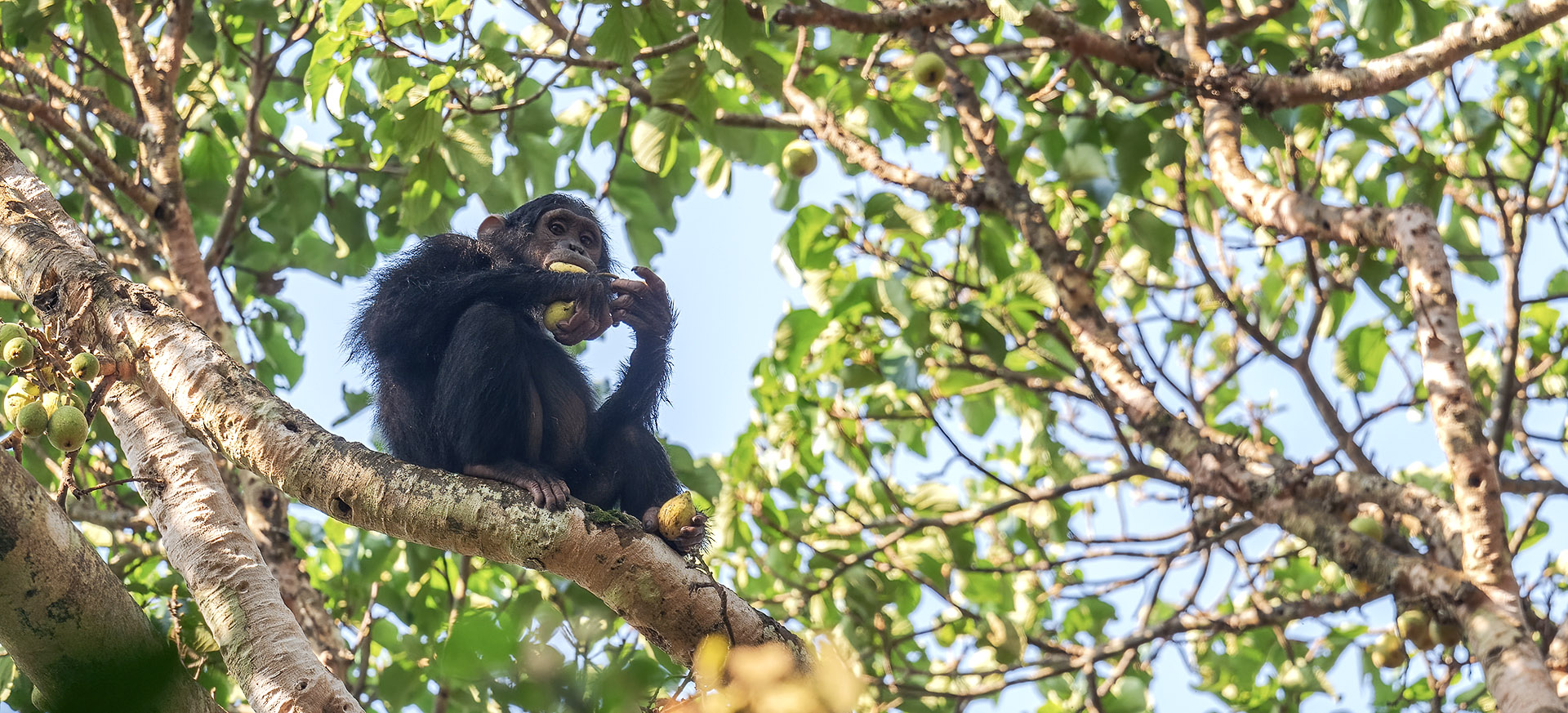
Extraordinary tailor-made adventures,
from earthy and edgy to easy and extravagant
From around USD 2500 per person, you set the ceiling
Sample Trips
Here are some of our popular trip shapes
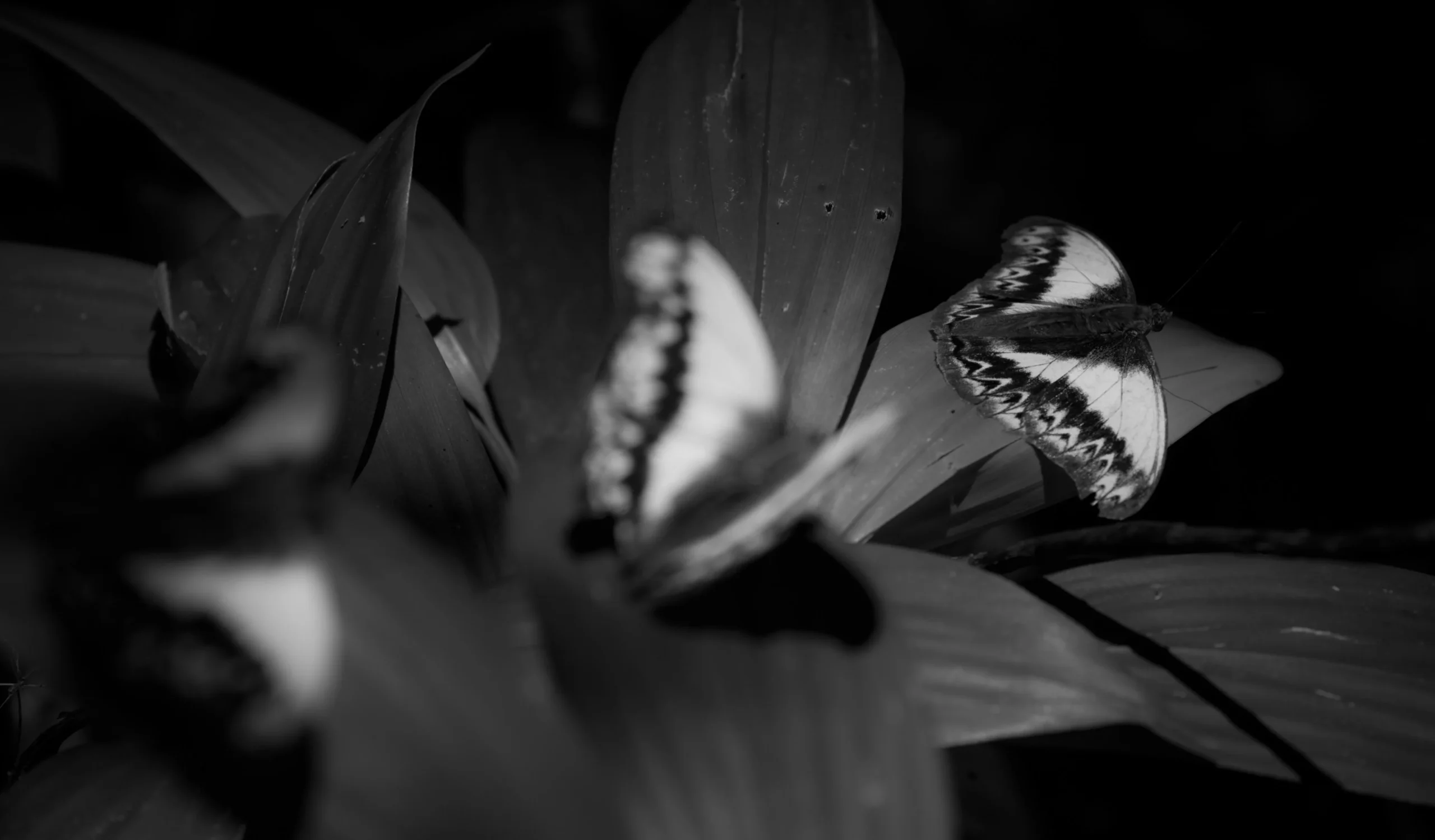
Get started on your trip
It’s never too soon to get in touch, we are here to help with every stage of your planning.
Best Lodges
We regularly inspect and photograph all of the the best lodges, to ensure that we always recommend the most suitable options
Key Locations
Take a look around related locations. Click ‘View more’ to explore locations further afield.
